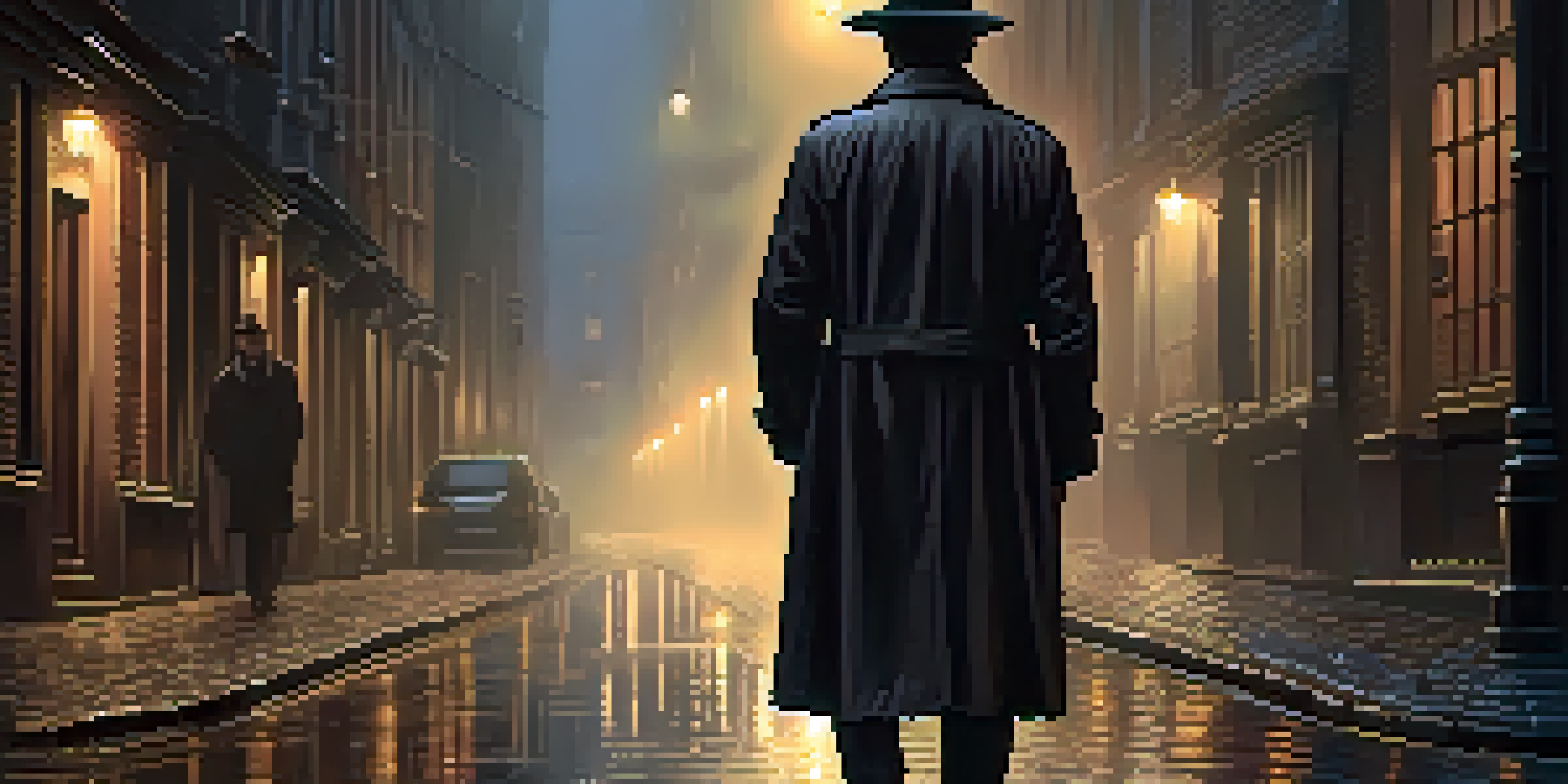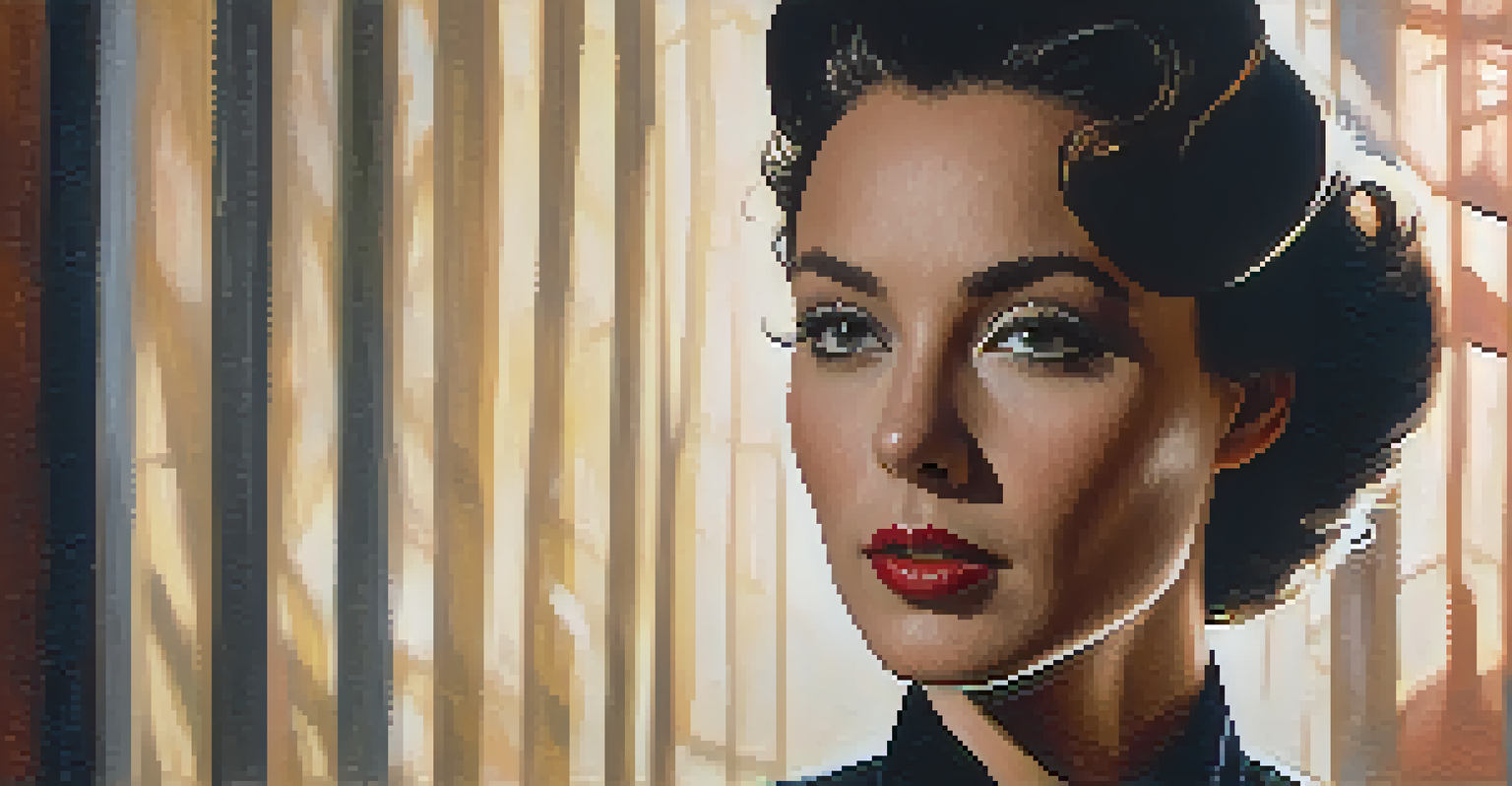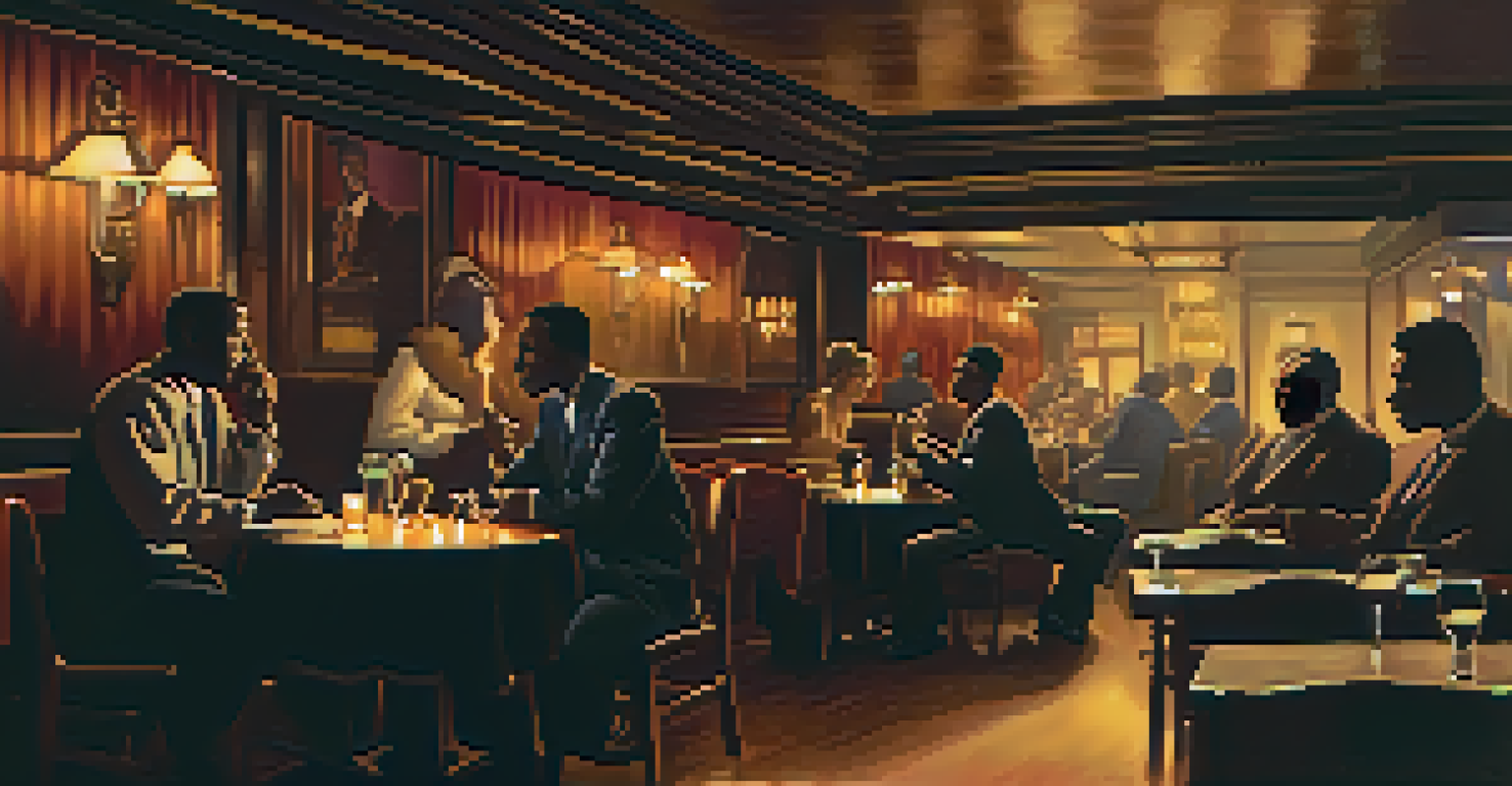The Lasting Impact of Film Noir on Contemporary Thrillers

Defining Film Noir: A Brief Overview of the Genre
Film noir, a cinematic style that emerged in the 1940s, is known for its dark themes and moral ambiguity. Characterized by its use of shadowy visuals and complex characters, it often explores the darker side of human nature. The genre typically features antiheroes, femme fatales, and a pervasive sense of existential dread, captivating audiences with its gritty realism.
Film noir is a genre that speaks to the darker side of human nature, revealing the complexities of morality and the struggles of the human condition.
This genre not only reflects the social anxieties of its time but also serves as a lens through which we explore human psychology. Think of it as a mirror held up to society, revealing its flaws and complexities. As we delve deeper into the world of film noir, we can see how its stylistic and thematic elements have seeped into contemporary thrillers.
Understanding film noir is essential for appreciating its lasting impact. By examining its key characteristics, we can trace how these elements have evolved and influenced modern storytelling in thrillers, creating a rich tapestry of suspense and intrigue.
Key Elements of Film Noir That Influence Modern Thrillers
Several hallmark traits define film noir, such as the use of low-key lighting, complex narratives, and morally ambiguous characters. These components create an atmosphere of tension and uncertainty that resonates with audiences. Modern thrillers often borrow these stylistic choices, employing shadowy visuals and intricate plots to heighten suspense.

Moreover, the archetypes of noir—like the cynical detective or the seductive femme fatale—have become staples in contemporary films. These characters embody the moral complexities that keep viewers engaged, reminding us that not everything is black and white. By incorporating these archetypes, modern thrillers maintain a connection to their noir predecessors.
Film Noir's Dark Themes Resonate Today
The themes of moral ambiguity and complex characters in film noir continue to influence modern thrillers, providing a rich framework for storytelling.
Ultimately, these key elements contribute to a storytelling framework that captivates audiences. As filmmakers draw inspiration from film noir, they craft narratives that invite viewers into a world of intrigue, complexity, and the constant interplay of good and evil.
The Role of Atmosphere and Visual Style in Storytelling
Atmosphere plays a crucial role in both film noir and contemporary thrillers. The eerie, shadow-laden visuals of noir create a palpable sense of dread, which modern filmmakers replicate to evoke similar emotions. Think of the iconic scenes with rain-soaked streets and dimly lit alleys—these visuals set the tone and immerse the audience in the film's world.
The femme fatale is a powerful symbol of female empowerment and complexity, challenging traditional narratives and inviting deeper engagement with character.
In contemporary thrillers, filmmakers often use similar techniques to manipulate audience emotions. By crafting an unsettling atmosphere through lighting and set design, they enhance tension and suspense. This technique allows viewers to feel the weight of the narrative, drawing them deeper into the story.
The visual style not only reflects the mood but also serves to foreshadow events. Just as noir films used stark contrasts to highlight moral dilemmas, modern thrillers employ visual cues to hint at twists and turns. This connection between atmosphere and narrative keeps audiences on the edge of their seats, mirroring the experience of classic film noir.
Complex Characters: The Antihero's Journey
One of the most intriguing aspects of film noir is its focus on complex characters, often portrayed as antiheroes. These flawed individuals navigate morally ambiguous situations, making choices that challenge viewers' perceptions of right and wrong. In contemporary thrillers, we see a resurgence of this character archetype, as filmmakers explore the gray areas of morality.
Modern antiheroes often reflect the struggles of contemporary society, grappling with their own demons while facing external threats. This complexity resonates with audiences, as it mirrors real-life challenges. By portraying characters with depth and nuance, filmmakers invite viewers to empathize with their journeys, even when their actions are questionable.
Atmosphere Enhances Suspense in Film
The eerie visuals and atmospheric tension established in film noir are effectively replicated in contemporary thrillers to evoke similar emotional responses.
The evolution of the antihero in thrillers not only honors the legacy of film noir but also reflects changing societal values. As we watch these characters confront their flaws, we are drawn into their internal conflicts, making their stories all the more compelling.
Narrative Techniques: Twists and Turns Inspired by Noir
Film noir is renowned for its intricate plots filled with unexpected twists and turns. This narrative style keeps viewers guessing, as they navigate a web of deception and intrigue. Contemporary thrillers have adopted this approach, crafting stories that challenge audiences to piece together clues and anticipate the next move.
The use of unreliable narrators is another technique borrowed from noir that has found its way into modern storytelling. By presenting narratives through the lens of a character with questionable motives, filmmakers create an atmosphere of uncertainty. This device not only heightens suspense but also encourages viewers to question the truth of what they see.
These narrative techniques ensure that thrillers remain engaging and thought-provoking. As audiences become more attuned to the complexity of storytelling, filmmakers continue to innovate, drawing from the rich tradition of film noir to craft unforgettable cinematic experiences.
The Femme Fatale: A Timeless Archetype in Thrillers
The femme fatale is a quintessential figure in film noir, embodying seduction and danger. This captivating character lures protagonists into perilous situations, often leading to their downfall. In contemporary thrillers, the femme fatale remains a powerful archetype, evolving to reflect modern themes of empowerment and complexity.
Today's femme fatales are not merely manipulative seductresses; they often possess depth and agency. By showcasing their motivations and struggles, filmmakers create multi-dimensional characters that resonate with audiences. This evolution allows for more nuanced storytelling, challenging traditional gender roles in the thriller genre.
The Antihero's Evolution in Thrillers
Complex antiheroes in both film noir and modern thrillers reflect societal struggles, inviting audiences to empathize with their morally ambiguous journeys.
The lasting influence of the femme fatale in modern thrillers underscores the genre's ability to adapt and transform. As filmmakers continue to explore this archetype, they contribute to a richer narrative landscape, inviting viewers to engage with the complexities of both character and story.
Conclusion: The Enduring Legacy of Film Noir in Thrillers
As we reflect on the lasting impact of film noir, it's clear that its influence permeates contemporary thrillers. From atmospheric visuals to complex characters and intricate plots, the elements of noir continue to shape the storytelling landscape. This legacy not only honors the past but also enriches the present, creating a tapestry of cinematic innovation.
The relationship between film noir and modern thrillers is a testament to the genre's adaptability and relevance. By weaving together themes of moral ambiguity and human complexity, filmmakers invite audiences to engage with stories that resonate on multiple levels. This intersection of past and present keeps the spirit of noir alive.

Ultimately, the legacy of film noir serves as a reminder of the power of storytelling. As we continue to explore the depths of human experience through the lens of thrillers, we pay homage to the genre that laid the foundation for so much of what we enjoy today.